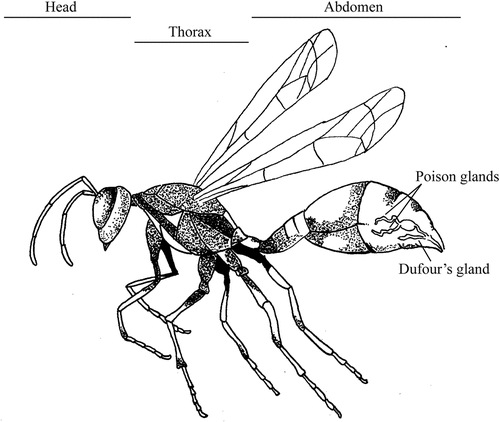Figures & data

Figure 1. Lateral view of a Polistes versicolor forager showing the position of head, thorax, abdomen, poison glands and the Dufour’s gland. The location and scale of the glands are approximate only. Wasp illustration based on Parent (2000) and the location of glands based on scheme from Jeanne (1996). Illustration by Julia Eloff.

Table 1. Most abundant putative compounds detected by GC/MS in the head, thorax, venom glands and Dufour’s gland of P. versicolor foragers from the Galápagos Islands. Area% corresponds to each compound’s abundance relative to all compounds detected. Compounds with potential annotations SI score ≥85 were considered reasonable. The identity of the compounds in bold was confirmed through comparison of mass spectra and retention times with those of authentic analytical standards. Compounds labeled Unidentified were potential annotations that were invalidated when compared to analytical standards; the potential annotated name between brackets has been left for reference. More than one potential annotation is shown if their SI score was the same, or if the compound’s first annotation identity was not confirmed.
Table 2. Number of positive responses to exposure to filter paper treated with body part extracts from female (top) or male (bottom) P. versicolor wasps in an arena assay. Numbers in bold and marked with * are significantly different from the solvent blanks in the respective 2 × 2 contingency table analysis.
